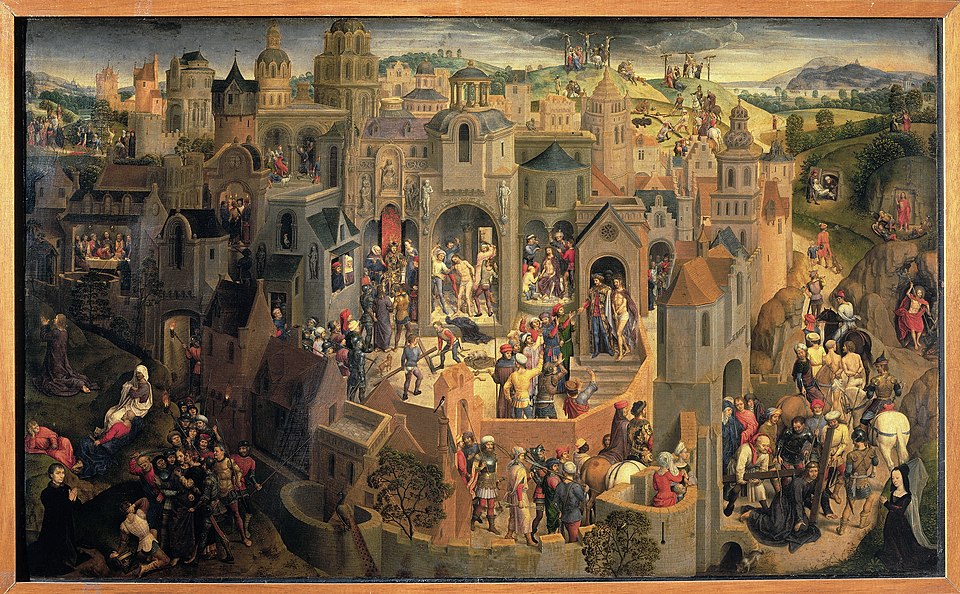If you want a deep dive into some of the big questions of our time, and a fascinating clash of minds, just listen to the recent conversation between Richard Dawkins and Ayaan Hirsi Ali.
In case you haven’t heard the story, as a young devoutly Muslim Somali-Dutch woman, Ayaan Hirsi Ali turned her back on Islam to become a poster-child of the New Atheist movement, often mentioned in the same breath as the famous ‘four horsemen’ of the movement – Dawkins, Dennett, Harris and Hitchens. When she announced she had become a Christian (or, as she described herself, a ‘lapsed atheist’) in November 2023, it sent shock waves through atheist ranks. A public meeting with her old friend Richard Dawkins was therefore eagerly anticipated.
As the conversation began, Ali described a period in the recent past when she experienced severe and prolonged depression, which led her even to the point of contemplating suicide. No amount of scientific-based reasoning or psychological treatment was able to help, until she went to see a therapist who diagnosed her problem as not so much mental or physical but spiritual - it was what she called a ‘spiritual bankruptcy’. She recommended that Hirsi Ali might as well try prayer. And so began her conversion.
Of course, Dawkins was incredulous. He started out assuming that she had only had a conversion to a ‘political Christianity’, seeing the usefulness of her new faith as a bulwark against Islam, or as a comforting myth in tough times, because, surely, an intelligent person like her could not possibly believe all the metaphysical mumbo-jumbo that vicars preach from the pulpit.
He was then somewhat taken aback by Ali’s confession that she did choose to believe the reality of the incarnation, that Jesus was the divine Son of God born of a virgin and that for a God who created the world, resurrecting his Son Jesus was no big deal. With a rueful shake of the head, Dawkins had to admit she was, to his great disappointment, a proper Christian.
Yet he was insistent he didn’t believe a word of it. The nub of the issue for Dawkins seemed to be his objection to the idea of ‘sin’. For him, all this is “obvious nonsense, theological bullshit… the idea that humanity is born in sin, and has to be cured of sin by Jesus being crucified… is a morally very unpleasant idea.”
Of course it’s unpleasant. Crucifixions generally were. It’s where we get our word excruciating from. And from the perspective of someone who has no sense whatsoever that they need saving, it is distasteful, embarrassing, not the kind of thing that you bring up in Oxford Senior Common Rooms, precisely because it is just that – unpleasant. I too find the notion that I am sinful, stubborn, deeply flawed, in desperate need of forgiveness and change unpleasant. I would much rather think I am fine as I am. Yet there are many things that are unpleasant but necessary - like surgery. Or changing dirty nappies. Or having to admit you are addicted to something.
And that is ultimately the difference between Dawkins and Ali. They are both as clever as each other; they have both read the same books; they both live similar lives; they know the same people. Yet Ayaan has been to a place where she knew she needed help, a help that no human being can provide, whereas Richard, it seems, has not.
It is like trying to measure the temperature of a summer’s day with a spanner. Spanners are useful, but not for measuring temperature.
Dawkins responded to Ali’s story by insisting that the vital question was whether Christianity was true, not whether it was consoling, pointing out that just because something is comforting does not mean it is true. True enough, but then it doesn’t mean it is not true either. The problem is, however, how we decide whether it is true. Dawkins seems to continue to think that science - test tubes, experiments and the rest - can tell one way or the other. Yet as the great Blaise Pascal put it:
If there is a God, he is infinitely beyond our comprehension, since, being invisible and without limits he bears no relation to us. We are therefore incapable of knowing either what he is or whether he is.
Science can’t really help us here. It is like trying to measure the temperature of a summer’s day with a spanner. Spanners are useful, but not for measuring temperature.
Whether Christianity makes sense or not cannot be determined by asking whether it is scientifically plausible or logically coherent – because that all depends on which scientific or logical scheme you are using to analyse it. It is all to do with the place from which you look at it, your ‘epistemic perspective’ to give it a fancy name. From the perspective of the strong, the super-confident, the sure-of-themselves, Christianity has never made much sense. When St Paul tried to explain it to the sophisticated first century pagans of Corinth – he concluded the same - it was ‘foolishness to the Greeks’.
Christianity makes no sense to someone who has not the slightest sense of their own need for something beyond themselves, someone who has not yet reached the end of their own resources, someone who has never experienced that frustrating tug in the other direction, that barrier which stands in the way when trying and failing to be a better version of themselves – that thing Christians call ‘sin’.
Why would you need a saviour if you don’t need saving? Would you even be able to recognise one when they came along? No amount of brilliant argument can convince the self-satisfied that a message centred on a man who is supposed to be God at the same, time, much less that same man hanging on a cross, is the most important news in the world. It is why Christianity continues to flourish in poorer than more affluent parts of the world, or at least in places where human need is closer to the surface.
She found the atheist paradigm that she used to believe, and that Dawkins still does, was no longer adequate for her.
The philosopher of science Thomas Kuhn described what he called ‘paradigm shifts’. They happen when a big scientific theory of the way things are gets stretched to breaking point, and people increasingly feel it no longer functions adequately as an explanation of the evidence at hand. It creaks at the seams, until an entirely new paradigm comes along that better explains the phenomena you are studying. The classic example was the shift from Newtonian to Einsteinian physics, which was not a small shift within an existing paradigm, but a wholesale change to a completely new way of looking at the world.
That is what Christians call conversion. This is what seems to have happened to Ayaan Hirsi Ali. What marks her out from Dawkins is not that she has found a crutch to lean on, whereas he is mentally stronger, so doesn’t need one. It is that she found the atheist paradigm that she used to believe, and that Dawkins still does, was no longer adequate for her – it no longer could offer the kind of framework of mind and heart that could support her in moments of despair as well as in joy. It no longer made sense of her experience of life. It could no longer offer the kind of framework that can resist some of the great cultural challenges of the day. This was not the addition of a belief in God to an existing rationalist mindset. It was adopting a whole new starting point for looking at the world. When she first announced her conversion she wrote: “I ultimately found life without any spiritual solace unendurable — indeed very nearly self-destructive. Atheism failed to answer a simple question: what is the meaning and purpose of life?” This is a classic paradigm shift.
Of course, Dawkins can’t see this. He is still in the old paradigm, one that still makes perfect sense to him. It’s just that he thinks it must make sense to everyone. It is surely the one that all right-thinking people should take.
As the conversation continued, Ayaan Hirsi Ali often seemed like someone trying to describe the smell of coffee to someone without a sense of smell. Dawkins in turn was like a colourblind person deriding someone for trying to describe the difference between turquoise and pink, because of course, anyone with any sense knows there is no real difference between them.
No amount of proof or evidence will ever convince either that the other is wrong. They are using different methods to discover the truth, one more analytical and scientific, the other more personal and instinctive. The question is: which one gets you to the heart of things? It’s decision every one of us has to make.






